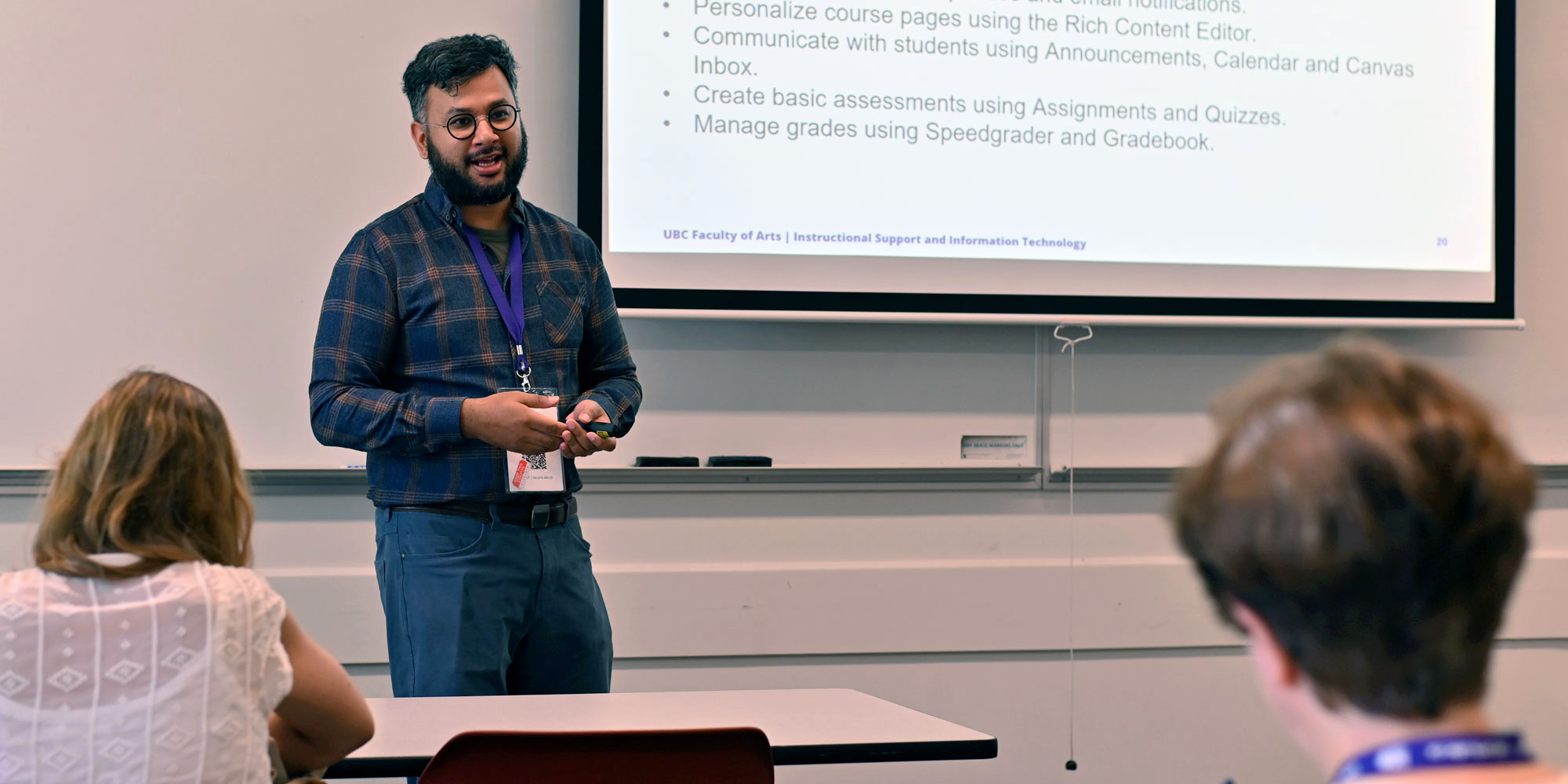Student Response Systems can be a great tool to engage with your student in your classes.
In this guide, you’ll find ideas and tips on using Student Response Systems (SRS) and some potential challenges you should be aware of.
Ideas for using Student Response Systems
SRS can track attendance and engagement automatically. You can use this data to assign grades by giving a participation mark that is part of a student’s overall grade based on their participation in these activities. Studies show that including a participation grade of 5% was sufficient to generate significant improvements in attendance.
At UBC, you can link the individual student's answers to the grade book by using a series of SRS questions to administer a short quiz at the beginning of class to check if students did the assigned reading or watched the flipped class videos.
SRS are most used to prompt thinking and discussion. After you give students time to think individually about a question and then commit to an answer, they are more likely to participate in discussions where reasons for those answers can be articulated. Questions that do not have a clear right answer or that bring to the surface common misconceptions can be effective for triggering discussion. A diversity of responses creates a sense of curiosity and promotes an increased desire to discuss the issue or listen to an explanation.
SRS can be used to take a quick poll to get a sense of students’ views on a particular topic or find out what the general experience is with a certain topic. This can enable you to tailor your delivery and lesson plan on the fly better to suit your students' existing views and understanding.
Use SRS questions to target areas within a particular domain that are known to cause student difficulty in understanding. These activities help your students acknowledge their misconceptions and allow you to assess whether there are continuing gaps in their understanding so you can address them.
Response systems can gauge your students’ understanding of concepts at the beginning and then again at the end of class. This approach will help you visualize how much their understanding has improved throughout a lesson and where there are still gaps. This strategy can be extended to evaluating learning over a full unit or course.
SRS are often associated with a non-traditional pedagogy emphasizing peer instruction. Proponents of peer instruction maintain that students learn better when they are forced to discover solutions in small groups independently. A typical pattern is:
- First, students are presented with a question and respond individually
- After responding, students discuss the question in small groups and defend their answer
- Finally, students answer the question again
The hope is that more students will submit the correct answer the second time after they have had a chance to listen to each others’ reasons for different answers. Depending on the results, you can lead a larger class discussion, provide further explanation, or iterate the peer instruction again.
Tips for using Student Response Systems activities in your class
Align learning objectives with student response questions
Identify key learning objectives for the class and design SRS questions and activities that align with those objectives. This will help focus the class on the most important concepts and highlight for students which concepts deserve particular attention. In addition, aligning the objectives and SRS questions to course assessments will further encourage student participation and the perceived importance of the activity.
Use the SRS consistently or continuously
One way to do this is to break your class session into 10-15 minute sections. Then, at each 15-minute interval, add a space for classroom response questions. This will help to focus student attention during the class and allow both you and your students to understand how well they have understood the concepts discussed before moving on to the next topic.
Couple classroom response questions with peer activities
Design the class session so that, where possible, classroom response questions are coupled with peer activities. Utilize peer instruction techniques by first asking a question for students to answer individually. Then, have students discuss their answers in small groups before having them answer the question again. This can then lead to instructor review if a large number of students are still missing the question. This technique is especially helpful in addressing key misconceptions students have about course material.
Pre-assessment
Use SRS questions at the start of the class to check and see if students understand the material from previous classes or class readings. Use the response feedback to provide a more focused review at the start of class before moving on.
Entice class discussion
Use SRS activities to stimulate class discussion by posing questions that elicit a difference of opinion.
Increase feedback with low-stakes formative assessment
Use SRS activities to facilitate low-stakes formative assessment that increases opportunities for regular feedback and interactions. While tying SRS activity to a percentage of the total grade has shown to increase participation and attendance, studies indicate that students respond unfavourably to having SRS questions tied too heavily to marks (particularly when graded on correct responses for individual questions) and extensive use of SRS for external rewards may negatively impact the creation of a positive learning environment.
Effective questions
Writing effective questions to engage students in more than low-level learning is a key component of an effective use of SRS in classrooms.
Challenges when implementing Student Response Systems activities in your class
Ensuring students buy and bring the devices to class can be a challenge.
Time and technical training are required to learn the system, as student satisfaction is tied to a smooth process (particularly when marks are involved).
Integrating SRS, particularly initially, is time-consuming.Time for design and preparation: writing good questions, reorganizing class activities, and attending technical training are all important considerations.
Instructors report that after integrating SRS activities, they had difficulty covering the necessary material in class or were required to compress their presentation too much.
When implementing active learning in class, there is always a trade-off between the amount of material covered and the depth of understanding. Try adopting a blended or flipped approach with online materials and activities to support the classroom activities to offset some coverage issues.
Focus SRS activities on key learning outcomes or real-world application of concepts to ensure class time is focused on the most important material.
Adapting instruction on the fly based on question responses can be an effective strategy but may be difficult for inexperienced instructors and may require more preparation time. There is also the potential for the class to go off-topic.
SRS is a new learning method for students; some may respond negatively simply because the learning rules have changed. As a result, students may experience stress and frustration and exhibit resistance. Care must also be taken not to overburden students with too much out-of-class preparation (such as watching 2 hours of videos) in addition to assigned readings.


